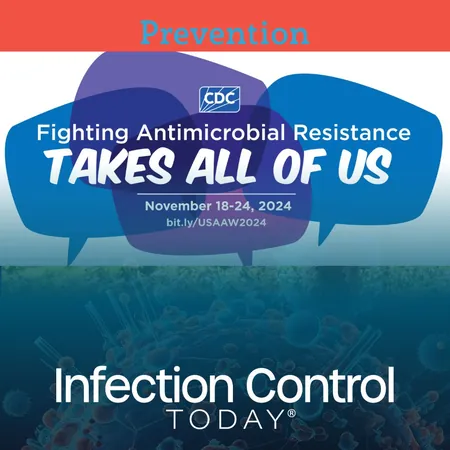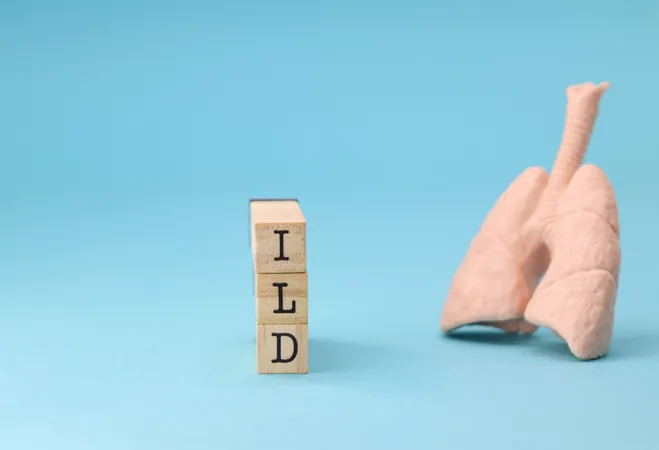
CDC's Urgent Call to Action: "Fighting Antimicrobial Resistance Requires Collective Effort"
2024-11-22
Author: Daniel
US Antibiotic Awareness Week 2024
In 2024, the observance of US Antibiotic Awareness Week (USAAW), taking place from November 18 to 24, aims to mobilize individuals and organizations around the critical issues of appropriate antibiotic and antifungal usage, alongside the escalating threat posed by antimicrobial resistance (AMR).
The Theme: Fighting Antimicrobial Resistance Takes All of Us
This year's theme, "Fighting Antimicrobial Resistance Takes All of Us," underscores a comprehensive One Health perspective, acknowledging the vital interconnections between human health, animal health, plant life, and environmental sustainability. Alarmingly, AMR is responsible for over 1.27 million deaths globally each year—nearly 48,000 of which occur in the United States, particularly exacerbated by infections like Clostridioides difficile. To effectively curtail this crisis, the prevention of infections and judicious use of antibiotics and antifungals are imperative.
Interview with Michael Craig, MA
In a recent conversation, Infection Control Today (ICT) interviewed Michael Craig, MA, Director of the CDC's AMR Coordination and Strategy Unit, to discuss the objectives of this year's USAAW and the broader implications of its theme.
Primary Goals of USAAW
ICT: What are the primary goals of USAAW this year, and how does the theme reflect the CDC’s strategy? Michael Craig, MA: USAAW is a national initiative dedicated to highlighting the necessity of responsible antibiotic and antifungal use. Our theme, "Fighting AMR Takes All of Us," draws attention to the urgent need for cooperation in tackling AMR, which arises when pathogens like bacteria and fungi adapt to evade treatments intended to eliminate them. This issue is not confined to a specific demographic or geographic area—AMR poses a threat to individuals at any stage of life, with responsible antibiotic use being crucial to combating this silent killer.
Globally, over 1 million deaths each year are attributed to AMR—surpassing fatalities from diseases like HIV/AIDS and malaria. To combat this, we need to prioritize infection prevention strategies that include access to clean water, proper sanitation, vaccination, and quality healthcare. These measures, combined with increased public education on responsible antibiotic usage, will contribute significantly to slowing the proliferation of AMR.
Progress in Combating AMR
ICT: The term "silent pandemic" often describes AMR. What progress has been made since the last United Nations High-level Meeting, and how does the CDC play a role? MC: In September 2024, world leaders convened in New York City for the second United Nations General Assembly High-level Meeting on AMR, which helped galvanize action through a political declaration that sets ambitious targets, including a goal to reduce deaths from bacterial AMR by 10% by 2030.
Key strategies established include promoting vaccination, rapid pathogen detection, and robust infection control measures, along with enhanced water, sanitation, and hygiene (WASH) practices. The CDC has committed to translating these goals into actionable initiatives, investing significantly in monitoring, preventing, and controlling antimicrobial-resistant infections, through programs like the CDC’s AMR Solutions Initiative which spans several U.S. territories and over 60 countries.
The One Health Approach
ICT: Can you explain the importance of a One Health approach in combating AMR? MC: AMR is an intricate issue that interlinks the health of humans, animals, and the environment. Antimicrobial-resistant pathogens can disseminate through various channels—including our food supply and environmental factors. The CDC employs a One Health strategy that integrates experts across human, animal, and environmental health sectors, facilitating an understanding of how diseases proliferate and equipping us to enact effective interventions.
No single entity can tackle AMR independently; thus, USAAW promotes collaborative efforts among diverse stakeholders to improve health outcomes worldwide.
Practical Steps for Individuals and Communities
ICT: What can individuals and communities do to fight AMR, and what practical steps can they take? MC: Infection prevention remains our primary defense against AMR. We encourage individuals to engage with healthcare professionals for appropriate treatments and adhere strictly to prescribed medication regimens. Additional key practices include: 1. Staying updated on vaccinations to prevent infections that may require antibiotics. 2. Maintaining impeccable hygiene by washing hands regularly. 3. Practicing safe food preparation methods to guard against foodborne illnesses. 4. Wearing protection during intimate relations to prevent STIs. 5. Disposing of leftover medications responsibly.
Individual diligence in these areas can greatly diminish the risk of infection and help in curbing the spread of resistant strains.
Community and Media Engagement
ICT: With landmarks lit purple for awareness, how crucial is community and media engagement in this fight against AMR? MC: Raising public awareness about AMR and the community’s role in combating it is crucial. Our communication efforts during USAAW leverage partnerships with health departments, nonprofits, and media outlets to maximally educate the public. Each year sees widespread participation across the U.S., where organizations engage in various activities—ranging from symbolic lighting of structures to interactive events aimed at sharing CDC resources.
Ultimately, the CDC is committed to fostering a unified front—unifying human, animal, and environmental health into a concerted effort against the pressing threat of antimicrobial resistance. By rallying together, we can reverse the tide of this public health crisis and secure a healthier future for us all.




 Brasil (PT)
Brasil (PT)
 Canada (EN)
Canada (EN)
 Chile (ES)
Chile (ES)
 España (ES)
España (ES)
 France (FR)
France (FR)
 Hong Kong (EN)
Hong Kong (EN)
 Italia (IT)
Italia (IT)
 日本 (JA)
日本 (JA)
 Magyarország (HU)
Magyarország (HU)
 Norge (NO)
Norge (NO)
 Polska (PL)
Polska (PL)
 Schweiz (DE)
Schweiz (DE)
 Singapore (EN)
Singapore (EN)
 Sverige (SV)
Sverige (SV)
 Suomi (FI)
Suomi (FI)
 Türkiye (TR)
Türkiye (TR)